All about the tea tree
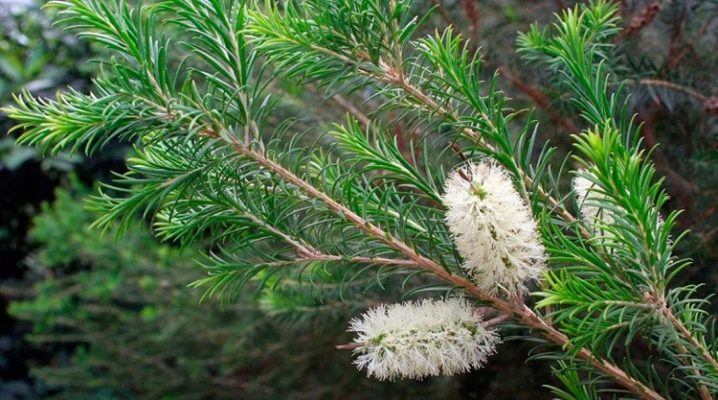
The tea tree is known for the medicinal properties of the oil obtained from its leaves. In addition, the culture looks aesthetically pleasing. Graceful plants with beautiful flowers and pleasant aroma attract many connoisseurs of living greenery. Therefore, they are grown both in garden plots and in urban areas as indoor shrubs.
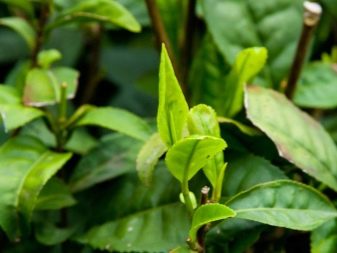
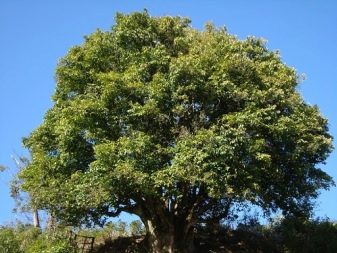
Description of the plant
The second name of the culture is melaleuca... It belongs to the Myrtle family and is a compact shrub or tree (depending on the variety). In the wild, it grows mainly on the Australian continent and the UK. As for the garden and home varieties, they thrive in the temperate climate of our country. The tea tree can grow up to 25 m. The trunk is covered with a thin bark of a light brown or grayish hue. Leaves are usually narrow, elongated (up to 12 cm), have a green color. From a distance, the foliage may slightly resemble the needles of conifers. On the edges of the leaf plates, there are glands that secrete essential oil. Its pronounced bactericidal properties determine the breadth of application for medical and cosmetic purposes.
Flowers are small. At the same time, they form beautiful spherical or oval inflorescences. The shade of the buds can be different: white, beige, yellow, pink. The elongated petals make the flowers look like household brushes. However, this does not diminish their charm and decorative value. When the flowering period ends, seed capsules remain on the branches. They do not open or fall off even after full maturation.
Seed germination persists for a long time, but their entry into the soil in a natural way usually occurs only after the death of the plant.
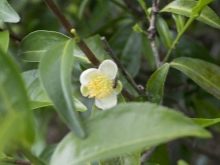

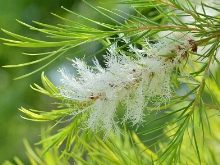
Views
Today there are more than one hundred varieties of this culture. Consider the most famous and common varieties.
- Melaleuca ordinary-leaved - a tree growing up to 8 m. This variety contains the highest concentration of essential oils. In this regard, it is it that is often cultivated for industrial purposes. The variety is distinguished by its snow-white flowering and bright green foliage.
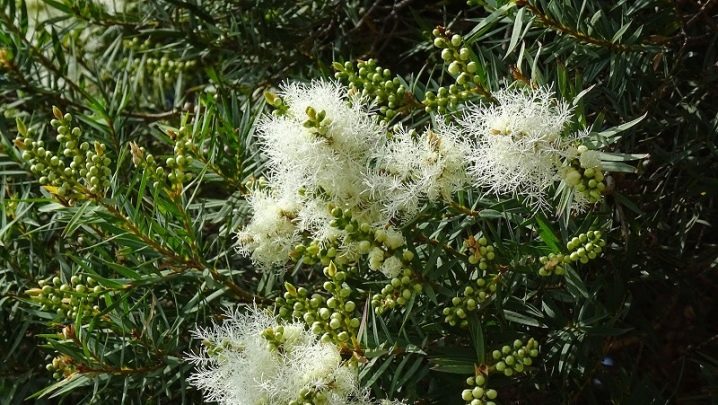
- Melaleuca St. John's wort named so because of some similarity with the culture of the same name. It is a highly branched shrub with brown branches that lends itself well to shaping. The foliage is light green. The flowers are red. The variety can be grown in greenhouses and apartments.
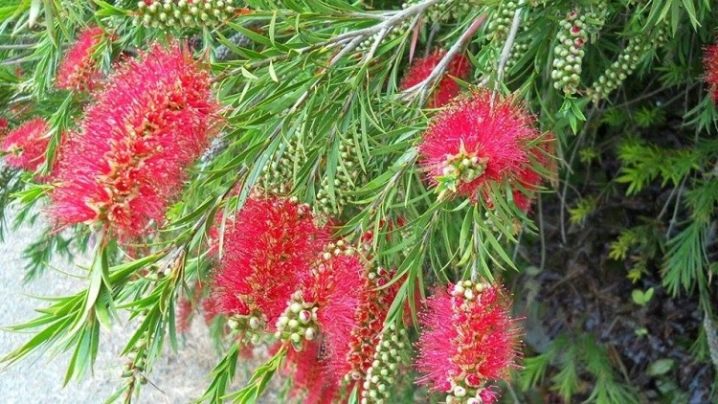
- Melaleuca flax-leaved (Linarifolia) - a short tree (up to 5 m) with gray-green leaves, similar to flax. The bark is dark, covered with small "hairs". In summer, the edges of the branches are decorated with white or creamy inflorescences.
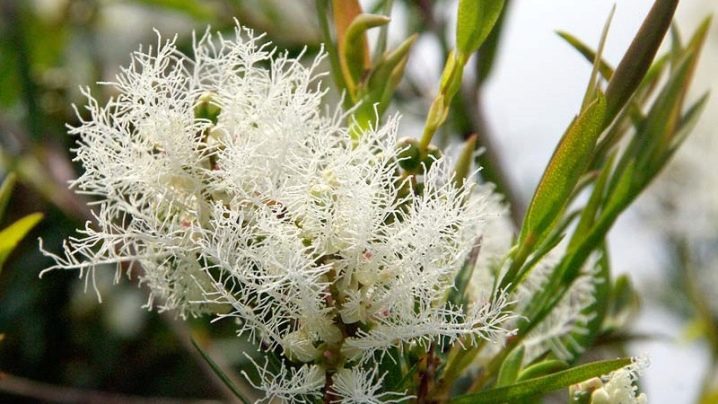
- Melaleuca nesophila most often it looks like a spreading bush with light gray bark and small leaves. Sometimes it is a compact tree (up to 4–5 m). The inflorescences are about 3 cm in size and have a bright pink-lavender shade.
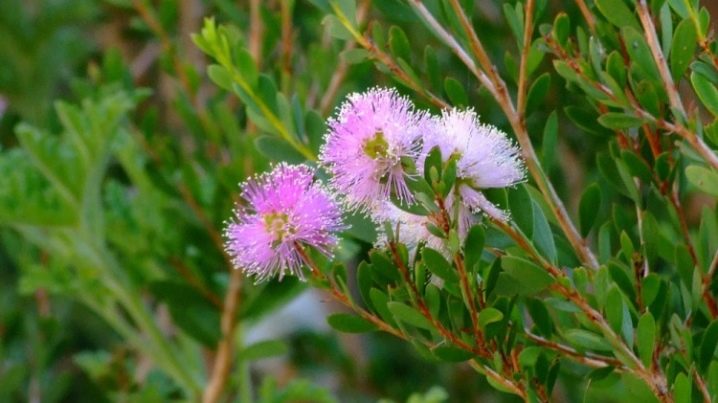
- Melaleuca Bracteata is a tree that can grow up to 9 m. The bark of the culture has a gray tone, it has a tendency to cracking. The egg-shaped foliage is gray-green and the flowers are creamy.
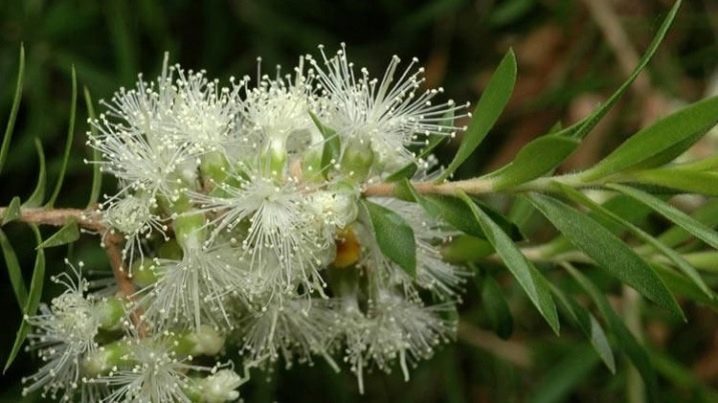
- Melaleuca five-nerve differs in leaves with embossed veins. The maximum tree height can be 19 m. In the warm season, flower brushes of white or beige tones appear on the crop.
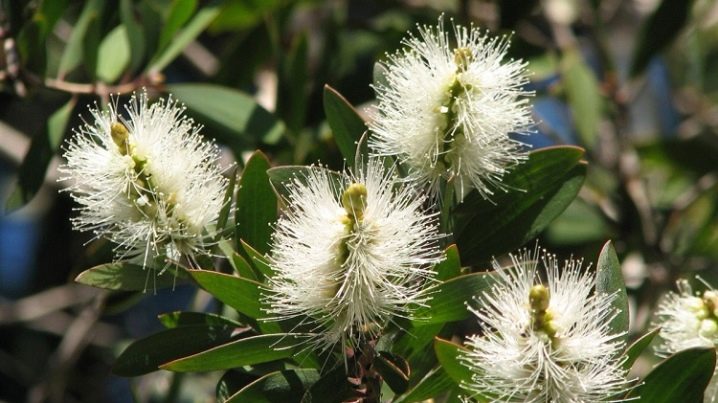
- Melaleuca arminalis has the shape of a tree of medium height (up to 9 m). The dark green leaves form a beautiful spherical crown. The flowers are red or pink.The length of the inflorescences can reach 5 cm.

- Melaleuca diosmifolia - an excellent variety for indoor cultivation. A compact bush with small needle-like foliage is decorated with creamy inflorescences. The decorativeness of the variety is very high.

Landing
Landing must be done correctly.
Location
Melaleuku can be grown both in the garden and at home. You just need to choose a suitable variety, taking into account the height and cold resistance of the plant. Regardless of whether the culture will grow indoors or outdoors, it is necessary to provide it with sufficient light. Diffused lighting is ideal. Therefore, at home, the bush can be slightly shaded with curtains, protecting it from the scorching rays of the sun. In the garden, you can plant a tree in an open place. Air currents can save foliage from burns.
In the period from late spring to late autumn, indoor plants can be taken out onto a balcony or a well-ventilated glazed loggia. The optimal temperature regime is 22-24 ° C. With the onset of winter, the culture is returned to the house. However, keeping it in a hot and stuffy room is not worth it. It is especially undesirable to place the bush pot next to the radiator. It is necessary to provide the plant with optimal moisture and good air exchange.
If the tea tree is grown in a garden, the soil is mulched using fallen leaves to protect it from the winter cold.

The soil
The culture likes loose soil with little acidity. Ideal for planting is a mixture that is easy to prepare... It is enough to mix peat with sand and turf soil in a 2: 1: 1 ratio. Also, a drainage layer must be placed on the bottom of a pot or hole in the garden.

Technology
The collection of seed material begins after flowering. It is then placed in a paper bag and stored until planting. The day before the procedure, it is advisable to get the seeds and spread them on a damp cloth. This will help stimulate growth. After such a simple preparation, they begin the process. Seeds are sown in a container with light fertile soil. No deepening required. Then the plantings are covered with foil or glass and placed in a warm, bright place. Young plants begin to appear in 1–2 weeks.
If the room temperature is less than + 20 °, the process may slow down. In this case, the emergence of shoots will have to wait 3-4 weeks. When 4 true leaves appear, the seedlings dive. The culture grows slowly. In addition, seedlings often die. Surviving plants begin to bloom only 5–6 years after planting. The described technology is relevant for home culture cultivation.
For planting a garden variety, it is better to use cuttings.
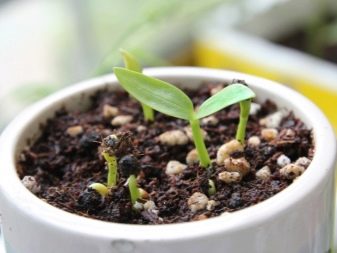
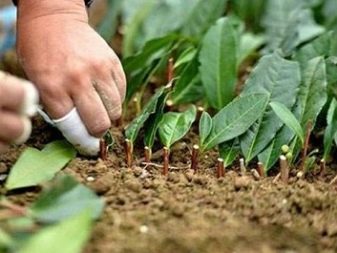
Care
There are mandatory procedures.
Watering
The tea tree loves moisture. It is no coincidence that in the wild, it grows next to water bodies. Accordingly, the garden and indoor varieties need frequent watering. In this case, it is important that excess liquid does not stagnate. Otherwise, there will be a risk of root rot.
In winter, watering can be done less often if the plant is located outdoors or on a loggia. At low air temperatures, it is sufficient to maintain a slight soil moisture. If the pot with the culture is in a warm room, it will be useful to periodically spray it. Also a great idea would be using a pallet with wet expanded clay or pebbles.

Top dressing
From the beginning of spring to the end of autumn, the tea tree is fertilized 2 times a month. If the plant is grown at home, formulations designed for flowers and other ornamental indoor crops are suitable. If the tree grows in the garden, you can take care of it using a complex mineral fertilizer.

Pruning
A tree or bush must be formed regularly, otherwise the culture will begin to grow strongly. The procedure is carried out with garden shears with a sharp blade. There are no clear recommendations for shaping, so the gardener can show imagination.
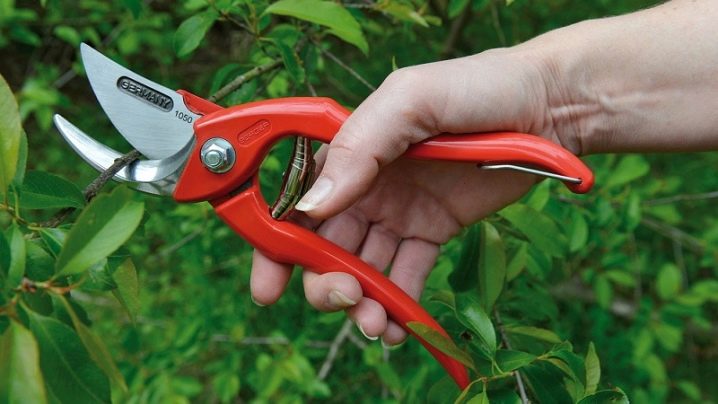
Reproduction
It is possible to grow a tea tree not only with the help of seedlings, but also in a vegetative way. For this, annual lignified cuttings are suitable. The process is pretty straightforward. In the spring or early summer, you need to cut off several young shoots 15 cm long. Then they should be treated with a stimulant solution (for example, you can use Kornevin). The planting is carried out in moist fertile soil. After that, the cutting is covered with a glass jar to protect it from adverse conditions.
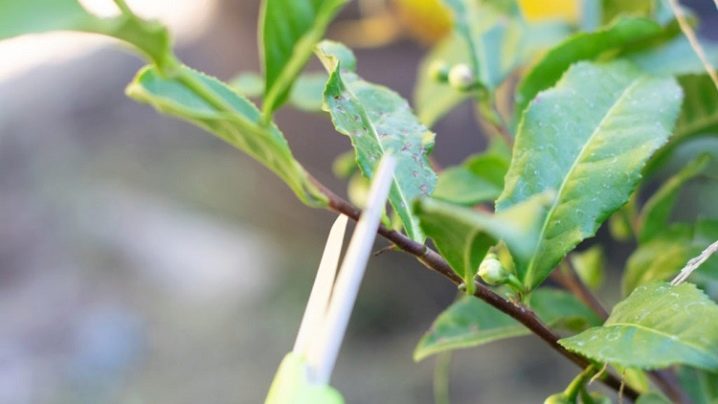
Diseases and pests
If signs of root rot are found, the plant must be dug up immediately. Then it is worth cutting off all damaged roots and treating the remaining parts with an antifungal agent. The soil must be completely replaced. Also, for a while, you need to reduce the intensity of watering. To make it easier for the culture to transfer the removal of part of the root system, you can slightly trim its crown.
If the bush has been attacked by a spider mite, the appropriate insecticides will come to the rescue. You can buy them at any garden store. For example, such drugs as "Akarin" and "Aktelik" have proven their effectiveness.
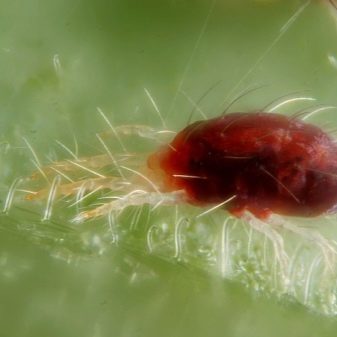




































































The comment was sent successfully.